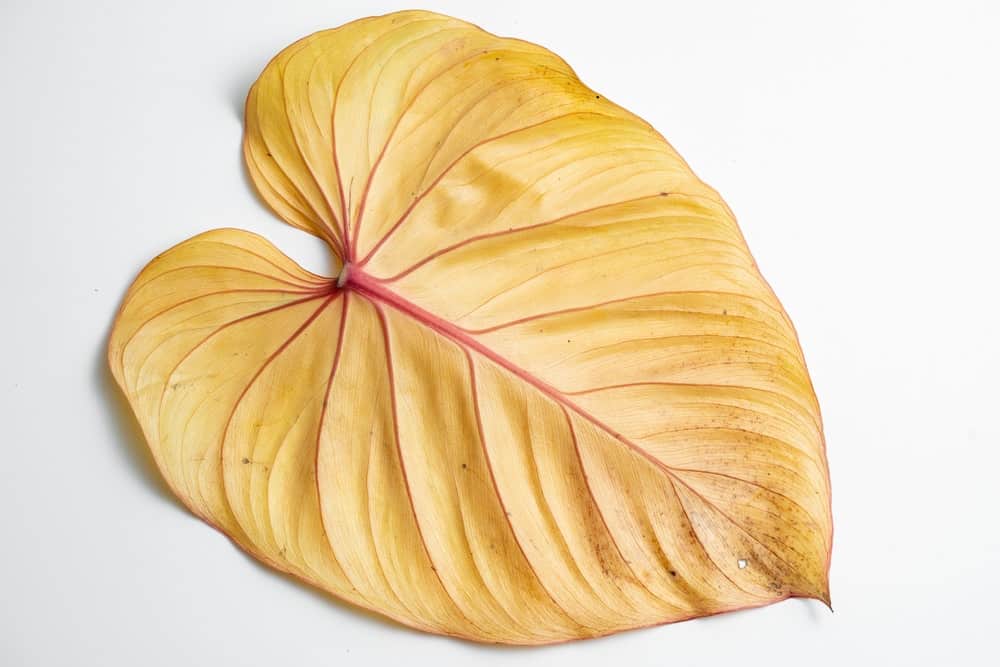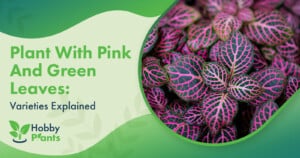The Philodendron comes in both climbing and non-climbing varieties and can add a beautiful jungle-like appeal to your home. They are tough and resilient houseplants that are fairly easy to care for and will thrive under the right conditions.
If your Philodendron’s leaves are turning yellow, it could be from a number of causes. You will need to find the source of the problem in order to preserve your plant.
The Philodendron Plant
Native to the tropical areas of South and Central America, the Philodendron comes in a wide array of varieties. From the climbing varieties that are often kept in hanging baskets or used to trail along a window or trellis, to the self-heading varieties which are grown in pots. In the wild, Philodendron can grow large enough to encircle entire trees, and they have become popular because they can add an attractive touch of tropical jungle to the home.
The sweetheart variety is well known as one of the hardiest houseplants around. Other varieties with more velvety leaves can be more difficult to grow, due to their need for more warmth and humidity. These varieties are also more susceptible to damage from direct light. New hybrids, which are hardier, have become available and these are worth looking into if you are interested in a climbing Philodendron.
Why Philodendron Plants Gets Yellow Leaves
There are a variety of reasons why a Philodendron’s leaves might begin to turn yellow and wilt.
1. Moisture
The soil that Philodendron are grown in always needs to be kept moist. This can pose a difficulty in arid climates or during colder months when the air within the household is typically drier. Despite their need for moist soil, use care not to overwater your plant as this can result in root rot which can kill your plant. These plants also require regular misting, as they thrive in high humidity.
2. Pests
Philodendron can be attacked by many of the common household plant pests such as Scale, mealybugs, and spider mites.
3. Nutrient Deficiencies
Plants require certain nutrients from the soil they are grown in. If these nutrients are lacking, the plant will become discolored. This can be caused by too much calcium or by a nitrogen deficiency. When this is the problem, often the lower leaves will turn yellow first, or leaves will turn yellow in a peculiar pattern.
4. Lighting Issues
Philodendron thrive best in bright but indirect light. If the plant receives too little light, the leaves on the bottom portion of the plant will begin to turn yellow first. If the plant is in direct sunlight, this can burn the leaves, causing them to turn yellow and brown where they are exposed to the light.

Treatment
Moisture:
- Water your Philodendron regularly to ensure the soil stays moist. Your plant is ready to be watered when the top twenty five percent of the soil it is growing in has dried out.
- Create a schedule for when you will water your Philodendron once you’ve come up with a routine that works. This will prevent you from inadvertently overwatering it.
- Mist your plant regularly, especially during seasons when the air inside your home is especially dry.
- Make sure your pot is planted in a pot that drains well to prevent root rot. If you notice water is not draining into the saucer beneath it after watering, you might need to repot your plant into a pot with better drainage.
- If your plant is too dry, the leaves will turn yellow and drop to conserve energy and water. If you notice the soil is parched, alter your watering schedule and ensure you water your Philodendron deeply each time without soaking it.
More like this: Yellow Money Tree Leaves – Reasons & Treatments
Pests:
- Verify which type of pest has afflicted your plant.
- Remove mealy bugs by hand, then clean the leaves where they were present with a cotton ball soaked in alcohol. Handpick the mealy bugs from the plant
- Spider mites can be washed away with a gentle spray of water. Use warm water at gentle pressure from a garden hose or shower to wash them off your plant.
- If these methods don’t work, natural insecticides are available that will keep your plants pest free.
Nutrient Deficiencies:
- Plant foods and fertilizers can help solve this problem.
- Ensure the plant food or fertilizer you use is compatible with your Philodendron. Different products work best with different plants. You can find the necessary information on the label.
Lighting Issues:
- Make sure your Philodendron is kept in a brightly lit area, but out of direct sunlight.
- If your plant must be in direct sunlight, use a sheer shade or curtain to filter the light coming in so the leaves do not burn.
- If there is not enough light, this can also cause yellowing, so ensure there is lots of diffuse natural light in the room where you keep your plant.
How to Take Care of the Yellow Leaves
It can take quite a while for a Philodendron to recover from the stressors that have resulted in yellow leaves. Give the plant time to readjust and heal. If, after a month, there are still yellow leaves present but the plant otherwise seems healthy, you can gently remove the leaves.
Some yellowing of leaves is natural. As a plant grows and ages, the old leaves will begin to turn yellow and drop off. If your plant appears to be otherwise healthy but older leaves are yellowing, you can remove these leaves as well to encourage new growth.
Also read: Yellow Stromanthe Leaves – Reasons
Conclusion
The Philodendron has been an extremely popular plant for many years due to its lush tropical aesthetic and relative ease of care. Though some varieties are easier to care for than others, these plants are still household plant staples. Keep to a consistent watering schedule and do not overwater. Ensure your plant is in diffuse, not direct, light. Periodically check your Philodendron for pasts that may stress or damage it.
If you do all of these things, you’ll have a beautiful Philodendron that will thrive to years, whether it is hanging in a basket or potted in a planter.
Keep reading:
- Yellow Pilea Leaves – Reasons & Treatments
- Yellow Sansevieria Leaves
- Yellow Homalomena Leaves – Treatments
Victoria is the owner and main author of hobby plants. She loves spending her free time in her garden planting and taking care of her plants. Victoria hopes you enjoy the content here!
![Why Are My Orchid Leaves Turning Yellow? [Find Out Here] Why Are My Orchid Leaves Turning Yellow? [Find Out Here]](https://www.hobbyplants.com/wp-content/uploads/2022/07/orchid-leaves-turning-yellow-300x158.jpg)

![Why Is My Bamboo Plant Turning Yellow? [Find Out Here] Why Is My Bamboo Plant Turning Yellow? [Find Out Here]](https://www.hobbyplants.com/wp-content/uploads/2022/07/why-is-my-bamboo-turning-yellow-300x158.jpg)
![Why Is My Fiddle Leaf Fig Dropping Leaves? [ANSWERED] Why Is My Fiddle Leaf Fig Dropping Leaves? [ANSWERED]](https://www.hobbyplants.com/wp-content/uploads/2022/06/why-is-my-fiddle-leaf-fig-dropping-leaves-300x158.jpg)
![Why Are My Bird of Paradise Leaves Curling? [FIND OUT HERE] Why Are My Bird of Paradise Leaves Curling? [FIND OUT HERE]](https://www.hobbyplants.com/wp-content/uploads/2022/07/bird-of-paradise-leaves-curling-300x158.jpg)
![Why Are My Peace Lily Leaves Turning Brown? [EXPLAINED] Why Are My Peace Lily Leaves Turning Brown? [EXPLAINED]](https://www.hobbyplants.com/wp-content/uploads/2022/07/peace-lily-leaves-turning-brown-1-300x158.jpg)
